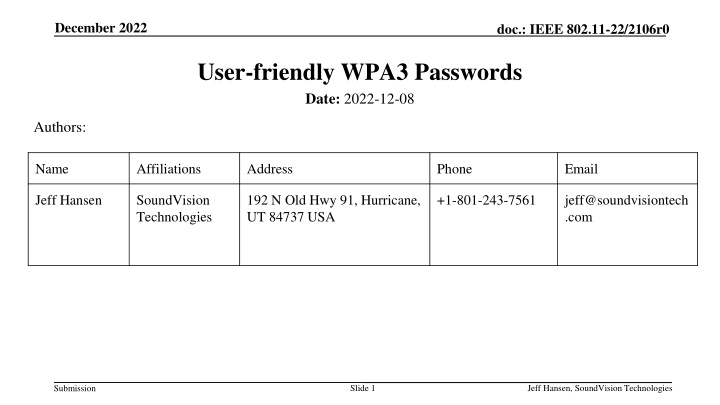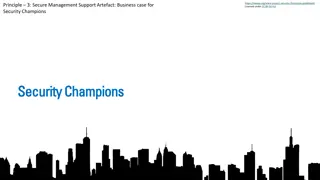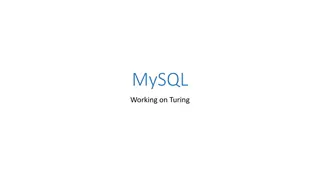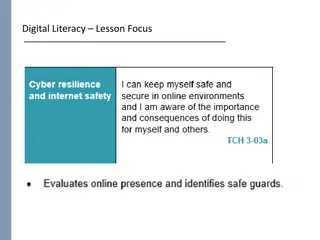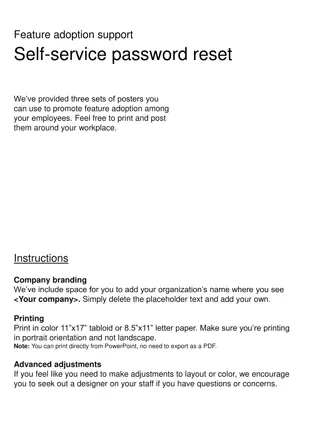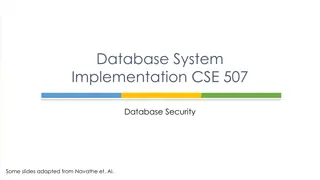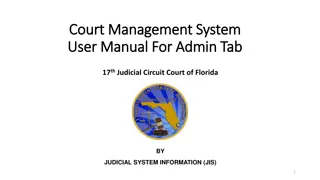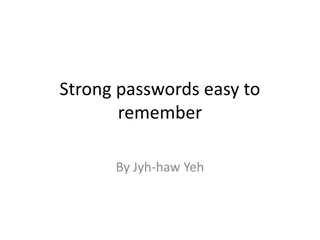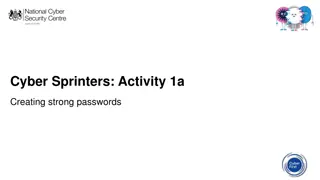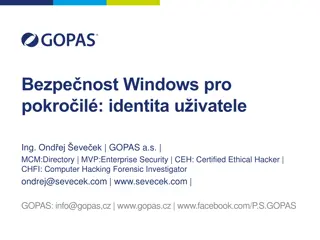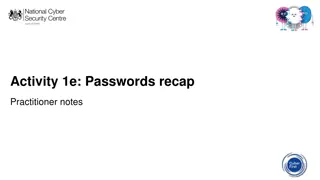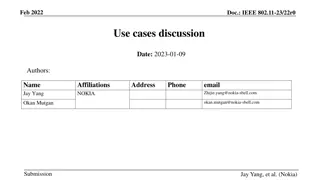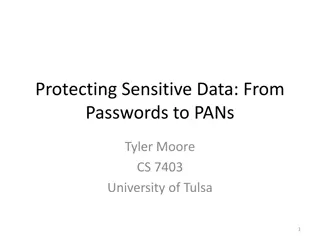Enhancing Wi-Fi Security with User-Friendly WPA3 Passwords
Proposal to enhance Wi-Fi security by incorporating password and password identifier hashes in the SAE commit exchange, enabling devices to hint to access points which password will be used. This approach aims to improve network efficiency and user experience while addressing privacy concerns associated with password identifiers. The solution also discusses potential issues related to tracking specific individuals/groups through multiple passwords.
Download Presentation

Please find below an Image/Link to download the presentation.
The content on the website is provided AS IS for your information and personal use only. It may not be sold, licensed, or shared on other websites without obtaining consent from the author.If you encounter any issues during the download, it is possible that the publisher has removed the file from their server.
You are allowed to download the files provided on this website for personal or commercial use, subject to the condition that they are used lawfully. All files are the property of their respective owners.
The content on the website is provided AS IS for your information and personal use only. It may not be sold, licensed, or shared on other websites without obtaining consent from the author.
E N D
Presentation Transcript
December 2022 doc.: IEEE 802.11-22/2106r0 User-friendly WPA3 Passwords Date: 2022-12-08 Authors: Name Affiliations Address Phone Email Jeff Hansen SoundVision Technologies 192 N Old Hwy 91, Hurricane, UT 84737 USA +1-801-243-7561 jeff@soundvisiontech .com Slide 1 Jeff Hansen, SoundVision Technologies Submission
December 2022 doc.: IEEE 802.11-22/2106r0 Abstract SAE has removed the ability for a single SSID to accept multiple passwords and route users based solely on the password used. This ability has long been used within WPA2- PSK to route different types of devices/users to their appropriate networks. MAC-based and SAE Password identifiers do not solve the problem because they require knowledge of the MAC/Identifier before SAE authentication commences. This proposal adds Password and Password-identifier hashes to the SAE commit exchange. This allows a Station to hint to the AP which password will be used, while offering the user varying degrees of privacy and security. It also eliminates PII privacy concerns with using password identifiers. Slide 2 Jeff Hansen, SoundVision Technologies Submission
December 2022 doc.: IEEE 802.11-22/2106r0 Why is this a big deal? SAE encourages the provisioning of many various SSIDs for various purposes. This clutters the air with unnecessary beacons and degrades the user experience for users who may not understand which network they should connect to. Which network do I use?? Slide 3 Jeff Hansen, SoundVision Technologies Submission
December 2022 doc.: IEEE 802.11-22/2106r0 Why is this a big deal? WPA2-PSK has had the ability to route different users and devices based solely on the password used. This eliminates the need to have many purpose-specific SSIDs. Much better! Slide 4 Jeff Hansen, SoundVision Technologies Submission
December 2022 doc.: IEEE 802.11-22/2106r0 Technical Proposal A small portion of SHA512(BSSID+password) (and/or password identifier) will be included in the SAE commit message to indicate which password the STA is committing to. This allows the AP to search its configured passwords, and commit appropriately to the user s desired password. The hash portion can be a very small number of bits, even 0 bits by default, to maintain status quo. For those networks that have a very small number of passwords (less than 4), even 4 bits of the hash is sufficient in most cases for the AP to detect which password the STA has committed to. The admin interface can even warn the admin of hash collision before deployment, as well as allow the admin to increase the number of bits desired. Slide 5 Jeff Hansen, SoundVision Technologies Submission
December 2022 doc.: IEEE 802.11-22/2106r0 Potential Issues It is true that allowing multiple passwords enables easier tracking of specific individuals or groups by disseminating specific passwords to those individuals/groups. However, this is (and has been) a legitimate use case in many environments, and the standard should be adjusted to allow admins to encourage as much or as little privacy as users are comfortable with. In STA User Interfaces, a privacy warning could be added to networks that have non-zero hash bits. The severity of the privacy warning can go up as the number of desired hash bits gets larger. As far as security implications, the security benefits of SAE alone should outweigh the ability to filter available passwords based on the small number of hash bits shared. Slide 6 Jeff Hansen, SoundVision Technologies Submission
December 2022 doc.: IEEE 802.11-22/2106r0 Other options Use password identifier as the password hash Requires less changes on AP side AP should still indicate how many hash bits it desires Don t include BSSID, or include something else in hash Slide 7 Jeff Hansen, SoundVision Technologies Submission
December 2022 doc.: IEEE 802.11-22/2106r0 Thank you! Questions? Slide 8 Jeff Hansen, SoundVision Technologies Submission
